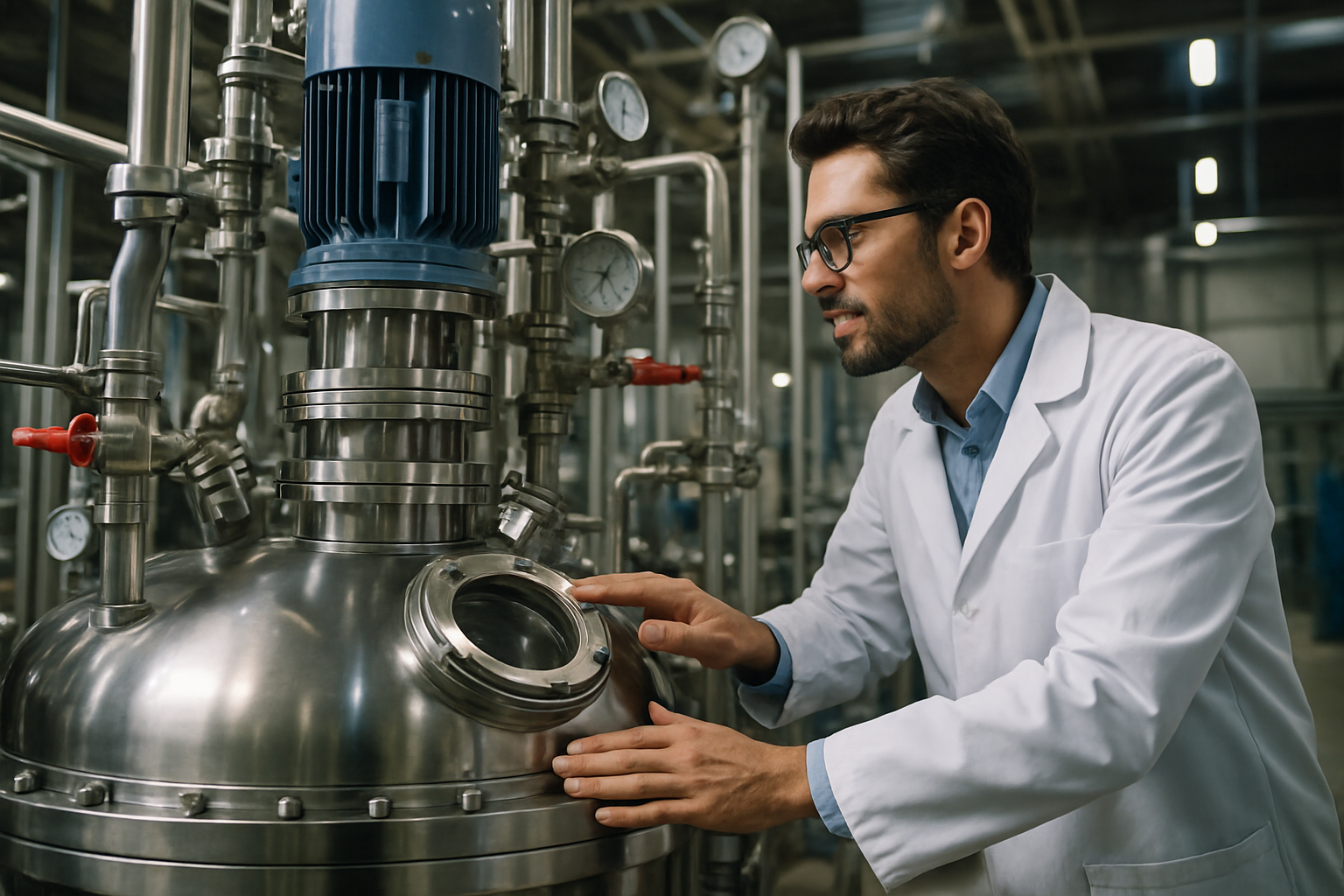Revolutionizing Biopharma Manufacturing: Innovations Shaping the Future of Medicine
The biopharma industry is undergoing a transformative shift as cutting-edge technologies redefine how medicines are discovered, developed, and produced. From the integration of artificial intelligence and automation to the rise of continuous manufacturing and advanced cell and gene therapies, innovation is driving unprecedented efficiency, precision, and scalability. These breakthroughs are not only accelerating time-to-market but also enabling the creation of personalized and more effective treatments, heralding a new era in the future of medicine.

Biopharmaceutical manufacturing has undergone remarkable transformation in recent years, driven by technological advancements, regulatory evolution, and the growing complexity of therapeutic products. As the industry shifts from traditional small-molecule drugs to biologics and advanced therapies, manufacturers face unprecedented challenges and opportunities. The integration of automation, data analytics, and flexible production systems is reshaping how medicines are made, tested, and delivered to patients worldwide.
This article is for informational purposes only and should not be considered medical advice. Please consult a qualified healthcare professional for personalized guidance and treatment.
The Changing Landscape of Biopharma Manufacturing
The biopharmaceutical manufacturing sector has moved far beyond conventional batch processing methods. Today’s facilities must accommodate diverse product types including monoclonal antibodies, vaccines, cell therapies, and gene therapies, each requiring specialized equipment and processes. Single-use technologies have gained prominence, offering flexibility and reducing cross-contamination risks while eliminating lengthy cleaning validation procedures. Continuous manufacturing represents another paradigm shift, enabling real-time quality control and more efficient resource utilization compared to traditional batch methods.
Modular manufacturing facilities are emerging as a solution to the industry’s need for agility. These scalable units can be deployed rapidly and reconfigured to produce different products, addressing supply chain vulnerabilities exposed during global health crises. Contract manufacturing organizations have expanded their capabilities to support smaller biotech companies lacking in-house production infrastructure, democratizing access to sophisticated manufacturing technologies. The shift toward decentralized manufacturing models, including point-of-care production for certain cell therapies, further illustrates how the landscape continues to evolve in response to therapeutic innovation.
The Role of Digital Transformation
Digital technologies are revolutionizing every aspect of biopharmaceutical production, from research and development through commercial manufacturing. Artificial intelligence and machine learning algorithms now optimize process parameters, predict equipment failures before they occur, and identify quality issues in real time. Digital twins—virtual replicas of physical manufacturing systems—allow engineers to simulate process changes and troubleshoot problems without disrupting actual production, significantly reducing development timelines and costs.
The implementation of advanced process analytics enables manufacturers to move from reactive to predictive quality management. Real-time monitoring systems collect vast amounts of data from sensors throughout production facilities, providing unprecedented visibility into process performance. Cloud-based platforms facilitate collaboration across global manufacturing networks, ensuring consistency and enabling rapid knowledge transfer. Blockchain technology is being explored for supply chain transparency and product authentication, addressing concerns about counterfeit medications. The integration of the Internet of Things connects equipment, environmental controls, and quality systems into cohesive ecosystems that respond dynamically to changing conditions.
Regulatory agencies are adapting to these technological advances, with initiatives supporting continuous manufacturing and real-time release testing. The concept of Quality by Design, which builds quality into products from development through manufacturing, relies heavily on digital tools for process understanding and control. As data integrity becomes increasingly critical, cybersecurity measures must evolve to protect sensitive manufacturing information and ensure patient safety.
Biopharma Manufacturing and Advanced Therapies
Advanced therapy medicinal products, including cell therapies, gene therapies, and tissue-engineered products, present unique manufacturing challenges that demand innovative solutions. Unlike traditional pharmaceuticals produced in large batches, many advanced therapies are personalized treatments manufactured for individual patients. This requires fundamentally different production models, often involving closed automated systems that minimize human intervention and contamination risk while maintaining flexibility.
Cell therapy manufacturing typically begins with patient-derived or donor cells that undergo genetic modification or expansion before being formulated as therapeutic products. The entire process must occur within strict timeframes while maintaining cell viability and potency. Automated cell processing systems are replacing manual methods, improving consistency and scalability while reducing the specialized workforce required. Cryopreservation technologies enable storage and distribution of these living medicines, though maintaining the cold chain from manufacturing facility to patient bedside remains challenging.
Gene therapy production involves complex viral vector manufacturing, requiring specialized containment facilities and purification processes. As these therapies move from rare disease treatments to more common conditions, manufacturers must scale production while maintaining the exquisite quality standards these products demand. Analytical methods continue advancing to better characterize these complex products and ensure batch-to-batch consistency. The industry is also developing platform technologies that can be adapted across multiple products, reducing development timelines and capital investment for each new therapy.
Sustainability and Future Directions
Environmental sustainability is becoming a priority in biopharmaceutical manufacturing as the industry recognizes its responsibility to reduce ecological impact. Single-use systems, while offering operational advantages, generate significant plastic waste that manufacturers are working to address through recycling programs and biodegradable materials. Energy-efficient facility designs, water conservation measures, and green chemistry principles are being incorporated into new manufacturing sites and retrofitted into existing facilities.
The convergence of biotechnology with nanotechnology, materials science, and information technology promises further manufacturing innovations. Organ-on-chip systems may eventually enable more predictive testing, reducing development failures and accelerating time to market. Three-dimensional bioprinting could revolutionize tissue engineering and regenerative medicine manufacturing. As artificial intelligence capabilities expand, fully autonomous manufacturing facilities that self-optimize and self-correct may become reality, though human oversight will remain essential for safety and quality assurance.
Conclusion
The biopharmaceutical manufacturing industry is experiencing a period of unprecedented innovation driven by therapeutic advances, digital transformation, and evolving patient needs. From flexible modular facilities to artificial intelligence-powered process control, these innovations are making manufacturing more efficient, reliable, and responsive. Advanced therapies are pushing the boundaries of what manufacturing systems can achieve, requiring new approaches to automation, analytics, and quality assurance. As the industry continues evolving, the integration of sustainability principles with cutting-edge technology will shape how medicines are produced for generations to come, ultimately improving patient access to life-changing treatments worldwide.



